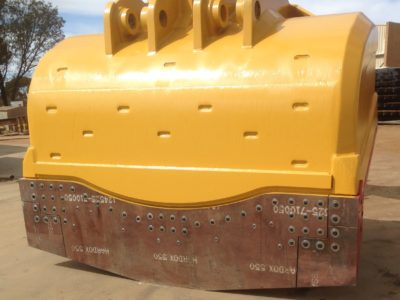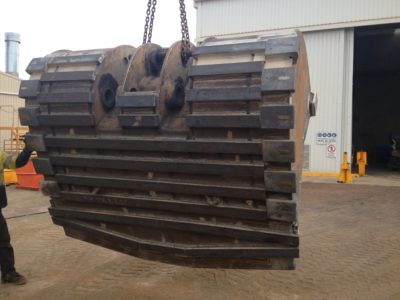- By Joanna Brown
- In Update
Underground Loader Bucket Performance
Which bucket is best?
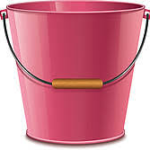
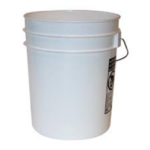
It depends on the use …………….
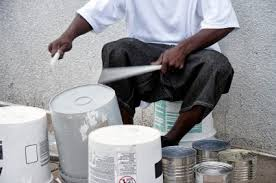
What about these two……………
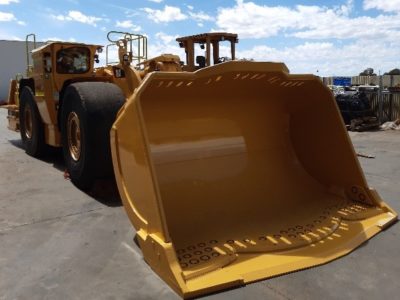
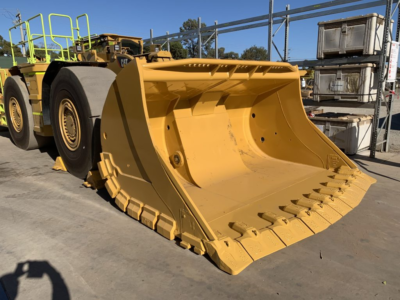
That’s not so easy.
It would be easy if we measured the required data. The challenge is that a $100,000 to $150,000 bucket hangs off a $2 to 3 million underground loader (or bogger) so it is natural to focus performance measurement on the loader as a whole. The opportunity to compare the performance of different buckets is lost in the “noise”.
Goldmont Engineering has been working with customers to compare the performance of its radically designed Outcast underground loader bucket with the performance of conventional buckets the industry has been using for many years. Two Outcast bucket trials are completed and both have resulted in the mine retaining the bucket and committing to replace the rest of the loader fleet with Outcast buckets. Here is a summary of what we learnt about comparing bucket performance.
Comparing performance of underground loader buckets
A comprehensive comparison of different models of loader buckets requires the following information for each of the models being compared:
- The total cost of purchasing each bucket and preparing the bucket for digging (ie the addition of a wear package including Ground Engaging Tools (GET) in the case of conventional buckets).
- The maintenance cost of each bucket including the cost of replacing wear parts.
- Loader downtime due to bucket maintenance.
- The fuel use by the loader while using each bucket.
- The tonnes moved by the loader while using each bucket.
- Operator feedback on effectiveness of each bucket in both production and non-production activities.
The maintenance cost, fuel use, and tonnes moved should be measured in units of per operating hour. Ideally operating hours should exclude idling hours.
Further detail is discussed below.
Total Purchase Cost to be Ready to Dig
The Outcast bucket does not require any add on wear package. It is ready to dig when it leaves the original equipment manufacturer. Conventional buckets, made to original equipment manufacturer specifications, require a wear package to be added prior to being used for digging. This is to protect the structural integrity of the bucket.
Therefore, a like for like comparison requires the purchase cost of a conventional bucket to include the cost of adding a complete wear package.
Maintenance Cost
Over the life cycle of a loader bucket, maintenance cost will be a function of the costs for:
- major refurbishment; and
- replacing maintenance items (i.e. wear bars, GET and other replacement parts) in between major refurbishments.
Cost of major refurbishment
The cost of major refurbishment will vary depending on the frequency of refurbishments, the hardness of the ore and the skill of the operator. A suggestion for estimating the average cost of major refurbishments for a fleet of loaders using conventional buckets is:
A. Sum of the costs over a three to five year period of each major refurbishment for all buckets at a mine; and
B. Divide the sum in (A) by the total operating hours for all loaders over the same period.
It might be necessary to adjust the costs for inflation in the earlier years if labour and/or material costs have changed significantly over the period used for analysis.
If the history of major refurbishment costs is not available, then the cost and frequency of major refurbishments will have to be estimated. This will apply to the Outcast bucket in all cases because it is a new product. The expected frequency of major refurbishments for the Outcast bucket will be estimated from wear rates measured in a three month trial. Goldmont Engineering will provide a cost estimate for the major refurbishment based on a conservative estimate of the scope of work.
The cost of major refurbishment should also include the cost of removing and replacing the bucket on the loader.
Cost to replace maintenance items
To estimate the average cost of replacing maintenance items for a fleet of loaders using conventional buckets, the following process is suggested:
A. For each maintenance item, identify the quantity of each item used over a 12 month period. Items used include those taken from site stores and those purchased directly from external suppliers.
B. Estimate the cost to replace each maintenance item from the sum of:
-
- Material cost – from purchasing;
- Labour cost – estimate of time to replace the maintenance item x labour cost per hour; and
- Consumable cost – from an estimate of consumables used to replace the maintenance item.
C. Total cost to replace maintenance items = A x B for each item.
The total cost to replace all maintenance items should be divided by the total operating hours for all loaders over the same 12 month period. This will calculate the average cost to replace maintenance items per operating hour of the loader.
This approach assumes that all loaders in the underground mine are using the same or similar type of bucket.
About 85% of the on-site maintenance costs for the Outcast bucket are associated with replacing the corner teeth and the bolt in lip plate. Both of these items are likely to be replaced by around 1200 operating hours when working with abrasive ore. Hence, a 3 month trial should provide a good estimate for these costs. The measured wear of other replacement items at the end of the trial will be used to estimate the life these items. The estimated life of each maintenance item will enable the life cycle cost of maintenance items to be estimated for the Outcast bucket.
Loader Downtime
The information to compare loader downtime due to bucket maintenance will come from:
- the estimated time and frequency for replacing each maintenance item; and
- the estimated time to remove a bucket from a loader and to replace it, and the frequency of removing buckets to transport off site for a major refurbishment.
An estimate of loader downtime for bucket maintenance that coincides with other loader maintenance should be excluded since the loader would have downtime irrespective of the need for bucket maintenance.
Fuel Costs (and associated CO2 emissions)
Fuel consumption per operating hour is a function of:
- The loader type, age and condition of the motor;
- The type of work the loader is doing (eg haulage Vs clean-up).
A comparison of fuel consumption between two loaders using different buckets is unlikely to provide definitive evidence of the influence of the bucket on fuel consumption. Therefore, a robust comparison of loader fuel consumption using different buckets requires the following sequence of steps:
- measure the fuel consumption for a loader using one bucket;
- change the bucket for the comparison bucket; and
- measure the fuel consumption for the same loader doing the same type of work as in step (1), while using the comparison bucket.
The loader activity while measuring the fuel consumption with each bucket should be the activity that will provide the most consistent machine load from one week to the next. The loader should work with each bucket over a time frame that is sufficient to ensure the measure of fuel consumption represents a reasonably accurate average for comparison purposes.
If the loader is focused on loading ore during the trial period, it will be useful to measure fuel consumption for both per operating hour and per tonne moved. The measure of fuel consumption per operating hour can be improved by adjusting for idle hours.
Carbon dioxide emissions can be calculated using the ratio of 3 kg of CO2 emitted for each litre of diesel fuel consumed.
Tonnes Moved
Tonnes moved can be influenced by a number of factors depending on the configuration of the mine. To understand the production potential of a loader with each of the comparison buckets, the following measures are proposed:
- the weight of ore picked up by each of the comparison buckets and
- the average time for a load-haul-dump cycle for each bucket. This time could be observed over a number of load-haul-dump cycles.
The value of moving more tonnes per bucket or reduced cycle times could be from either increasing output or reducing the loader operating hours per tonne moved.
Hang-up
If there are issues with hang-up then the cost of the hang-up should be captured in the measures of:
- fuel use (more fuel per operating hour); and
- tonnes moved (less tonnes moved per load-haul-dump cycle).
If the tonnes moved measurement is not robust or not useful for comparison purposes, it will be useful to measure the average weight of hang-up in the bucket.
The time required to wash out hang-up should also be measured if this time is significant and it increases the period for which the loader is not available.
Operator Feedback
Finally, ask the underground loader operator what he or she thinks of the bucket performance. These are some of the things Goldmont Engineering has learnt from operators:
- operating effectiveness of buckets for the range of tasks done by underground loaders eg digging, loading, clean-up, cutting windrows, back-scaling.
- incidental damage caused by some buckets eg wear bars catching on truck trays, heel blocks puncturing ventilation bags.
- the level of machine stress the operator feels from shock loads transferred from the bucket.
